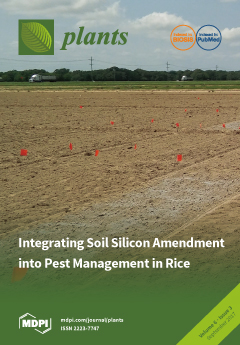Traditional medicine and ecological cues can both help to reveal bioactive natural compounds. Indigenous Australians have long used kino from trunks of the eucalypt tree,
Corymbia citriodora, in traditional medicine. A closely related eucalypt,
C. torelliana, produces a fruit resin with
[...] Read more.
Traditional medicine and ecological cues can both help to reveal bioactive natural compounds. Indigenous Australians have long used kino from trunks of the eucalypt tree,
Corymbia citriodora, in traditional medicine. A closely related eucalypt,
C. torelliana, produces a fruit resin with antimicrobial properties that is highly attractive to stingless bees. We tested the antimicrobial activity of extracts from kino of
C. citriodora,
C. torelliana ×
C. citriodora, and
C. torelliana against three Gram-negative and two Gram-positive bacteria and the unicellular fungus,
Candida albicans. All extracts were active against all microbes, with the highest activity observed against
P. aeruginosa. We tested the activity of seven flavonoids from the kino of
C. torelliana against
P. aeruginosa and
S. aureus. All flavonoids were active against
P. aeruginosa, and one compound, (+)-(2S)-4′,5,7-trihydroxy-6-methylflavanone, was active against
S. aureus. Another compound, 4′,5,7-trihydroxy-6,8-dimethylflavanone, greatly increased biofilm formation by both
P. aeruginosa and
S. aureus. The presence or absence of methyl groups at positions 6 and 8 in the flavonoid A ring determined their anti-
Staphylococcus and biofilm-stimulating activity. One of the most abundant and active compounds, 3,4′,5,7-tetrahydroxyflavanone, was tested further against
P. aeruginosa and was found to be bacteriostatic at its minimum inhibitory concentration of 200 µg/mL. This flavanonol reduced adhesion of
P. aeruginosa cells while inducing no cytotoxic effects in Vero cells. This study demonstrated the antimicrobial properties of flavonoids in eucalypt kino and highlighted that traditional medicinal knowledge and ecological cues can reveal valuable natural compounds.
Full article






